Articles parent
{{start}}
Not for use in posts … just keeps the articles page category in the same drop down list.
{{end}}
{{+1}}Casting a fly rod{{-1}}
{{start}}
Casting can make or break your fly fishing experience and once you have mastered the basics its surprising how easy it all becomes. The basic thing you have to remember is that your casting a fly line and the terminal tackle (your leader tippet and fly or flies) are along for the ride.{{end}}
{{+1}}What is fly fishing{{-1}}
{{start}}
Fly fishing is that form of fishing, for any fish, using a rod and fly line to cast artificial “flies” or “lures” either as bait, attractors or antagonizes to fish which are known or expected to be in the vicinity of where the fly or lure is cast.{{end}}
{{+1}}Fly fishing tips{{-1}}
{{start}}
I find that I get a lot more out of my fishing time if i am well prepared for the outing. The amount and depth of preparation depends on the duration and importance of a fishing trip. For example if you just walking out the back gate to your home water for an hours fishing then minimal preparation is necessary. If however your heading to a fishing competition or other important outing it pays to prepare properly.{{end}}
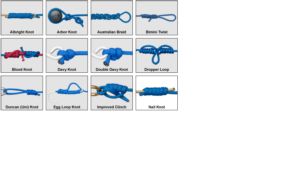
{{+1}}My favorite 8 knots{{-1}}
{{start}}
Just behind poor fishing technique and inept netting technique the most prolific reason for fish being lost is a problem with a knot. There are more knots than you can poke a stick at that can be used in fly fishing and over time you will settle on a few that you tie well and have confidence in. Over the years I have tried a lot of different knots and currently I have settled on the following 6 knots.{{end}}
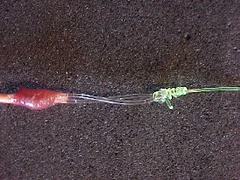
{{+1}}Knots – open loop closed with a blood knot – connection to fly line{{-1}}
{{start}}
This is an extension of the "open loop to fly line connection" and adds an extra element of safety. I use it in competitions just to be sure that there is no chance of the leader separating from the loop at the end of the fly line. The one failure I had with an "open loop connection to fly line" as described above was in a competition and I am sure it cost me the session.{{end}}
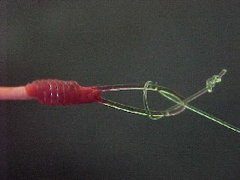
{{+1}}Knots – open loop connection to fly line{{-1}}
{{start}}
This is the ideal way of attaching your leader to your fly line. First you will need a nail loop knot on the end of your fly line as described below. The benefit is that by pushing the end of the leader back into the knot you can easily release your leader from the fly line. This makes changing leaders and fly lines easy.{{end}}
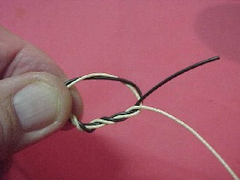
{{+1}}Knots – surgeons knot{{-1}}
{{start}}
I have fished with a few surgeons and asked them about this knot and they certainly don't use it in the practice of their surgical art so I don't know where its name comes from. That doesn't worry me because it is simply the best knot I know off for joining two lengths of similar or dissimilar lines together. It works well when building leaders or when adding a fluorocarbon tippet to a monofilament leader.{{end}}
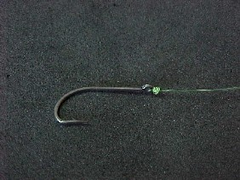
{{+1}}Knots – Lefty’s loop knot{{-1}}
{{start}}
I like to tie all my wet flies on using a loop knot because you get a much better swimming action with the fly. The loop knot I use is based on Lefty Kreh's Loop knot and seldom lets me down.{{end}}
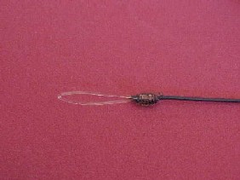
{{+1}}Knots – nail loop knot{{-1}}
{{start}}
The system I always use is to form a 1cm loop on the end of all my fly lines using a nail knot tool. I use Maxima Ultragreen Monofilament of a size that will give me a loop which is about 2/3 the thickness of the fly line. For a #6 or #7 weight fly lines this is around 25lb breaking strain. The loops do wear over time but each time you cut one off and replace it you only loose about 1cm of fly line.{{end}}
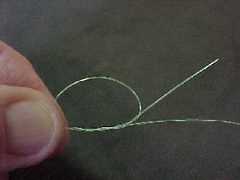
{{+1}}Knots – uni knot{{-1}}
{{start}}
I think this is the best of the closed knots for tying on dry flies.{{end}}













